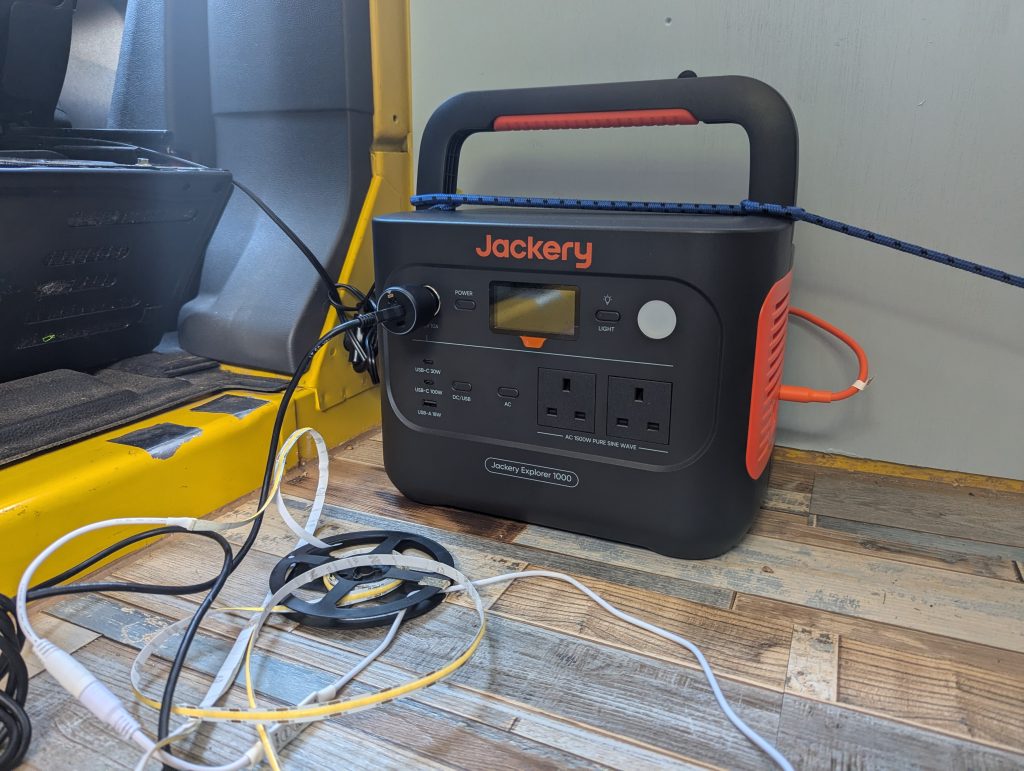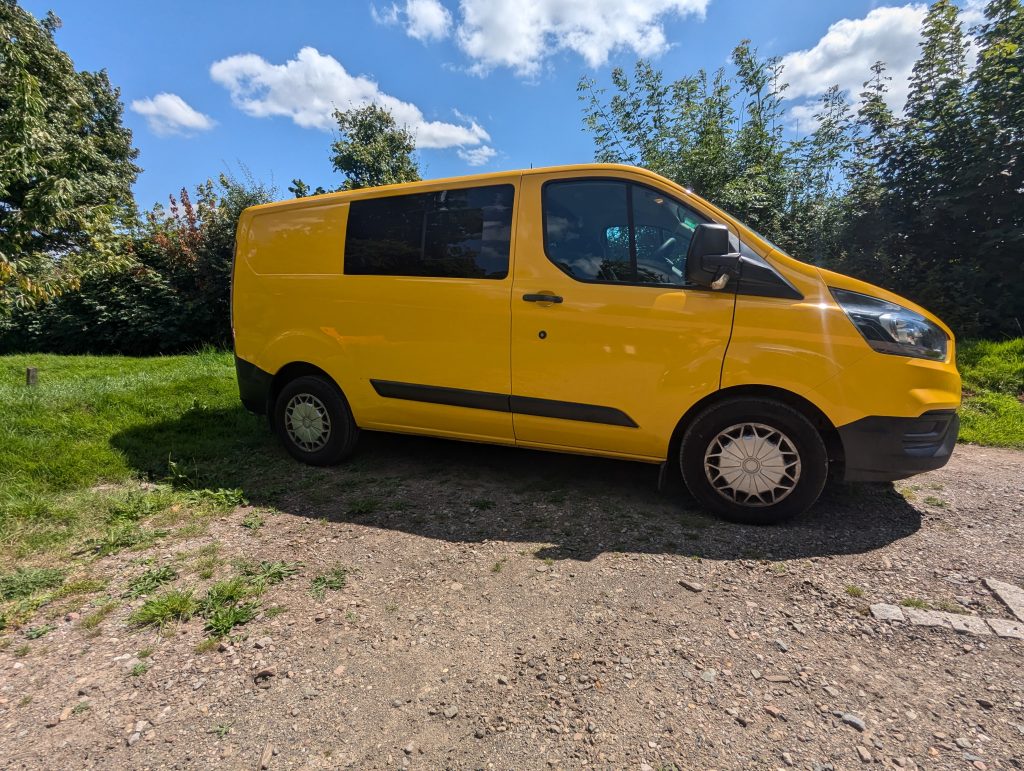When I started planning my campervan, I thought the electrics would be one of the trickiest parts. I watched endless YouTube videos of people wiring up batteries, inverters, charge controllers, split charge systems etc etc. It looked very complicated and I was worried about making a mistake like using the wrong cable and starting a fire, especially as I will be sleeping right next to it all.
I wanted something simpler and more adpatable. That’s when I landed on the Jackery Explorer 1000 V2.
The Downsides I Discovered
The Jackery isn’t perfect and some other power stations improve on this things:
- 12V Limitations
The only 12V outlet is a cigarette lighter style socket, and it’s capped at 10A. If you’ve got plans to run high-powered 12V kit, you might struggle. I got around it by wiring that socket into a small fuse box. That powers my lights and my compressor fridge—nothing crazy, but it gets the job done. - Charging Isn’t Super Fast
On the road, I charge at 100W input while driving. That means a full charge can take the better part of a day—around 12–14 hours if it’s low. When I’m plugged into mains, it’s much quicker, usually around 1.7 hours from empty to full. That’s fine for me, but it’s not as flexible as a proper split-charge system where your alternator feeds the leisure battery directly. - Solar Input Is Capped
The Jackery gives you one IEC input for 240v mains and two barrel connectors for solar, but the barrel connectors only allow 200W each. That limits how much solar you can realistically throw at it. A traditional setup would let me go much bigger if I wanted.
Why I Still Love It
Even with those issues, the Jackery has been worth every penny for me.
The biggest win is flexibility. I can just pull it out of the van whenever I want. At home, it doubles as a backup in case of a power cut. During my build, it was a lifesaver—I could carry it down the road and run power tools and lights while working on the van parked in a public street. No need to drag an extension lead down the road.
It also makes the install ridiculously simple. No big wiring projects, no trying to piece together components. I just slotted it into a cupboard, with all the inputs on one side and all the outputs on the other, and it looks tidy.
And here’s something that tipped me over the edge: it’s lighter than other power stations in its class. Some of the alternatives I looked at were noticeably bulkier and heavier. Being able to move it around easily—whether in and out of the van, into the house, or over to an awning—was a real selling point.

How I Actually Use It
- Day to day in the van: I’ve got a little recessed desk extension lead that plugs straight into the Jackery, perfect for charging for small heater, laptop, phones and even the hot chocolate maker on a cold evening.
- 12V gear: The 12-way fuse box hooked into the cigarette socket keeps my lights and fridge running.
- Extra space: When I use the drive-away awning, I run an extension reel from the Jackery to power lights and an inflatable matress.
- On sites: I carry a camping hook-up kit, so if I’m on a proper campsite I can plug the Jackery into mains and keep it topped up while still using it as the main supply.
The Bottom Line
If you need huge solar capacity and heavy-duty 12V outputs, the Jackery probably isn’t for you. A traditional setup will give you more control and more expansion options.
But for me, the Jackery 1000 V2 has been all about flexibility and simplicity. It keeps my van tidy, gives me power at home in emergencies, is lighter than other similar power stations, and lets me carry electricity wherever I need it.
And the best part? I didn’t have to become an electrician to get it all working.

